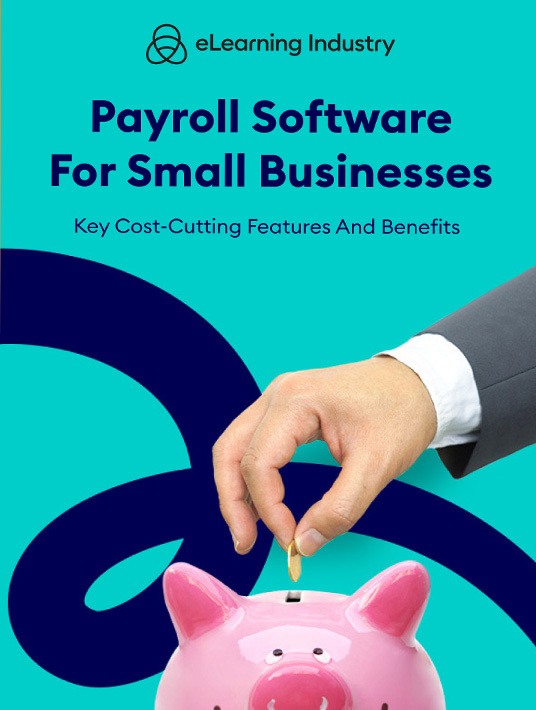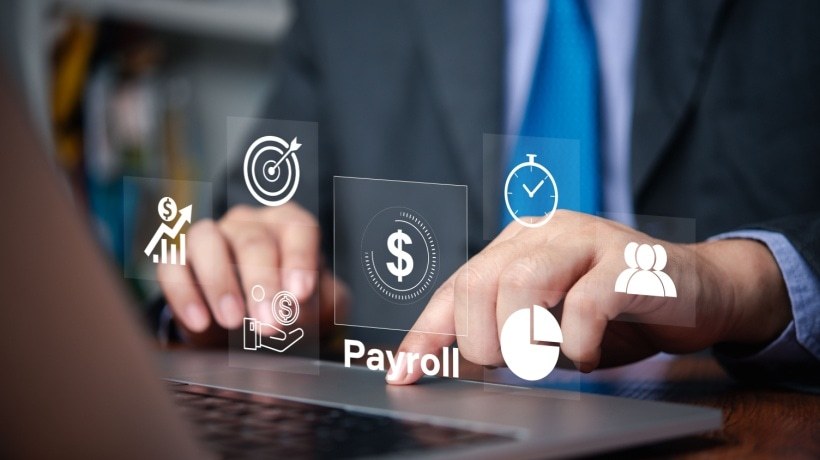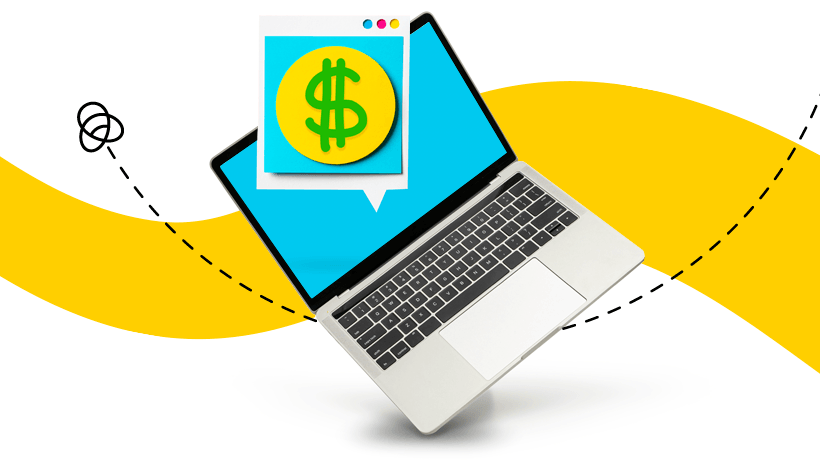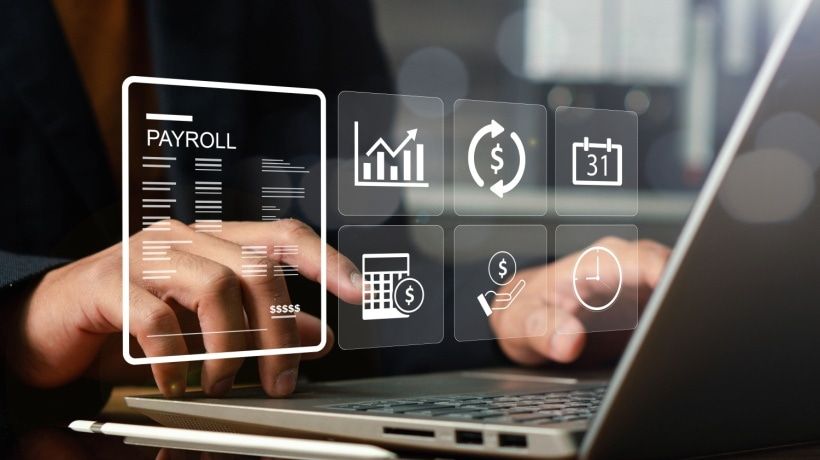Is Payroll Software For Small Businesses Right For Your SMB?
Payroll software for small businesses is a versatile tool that automates most of the processes. Employees can track their own work hours, verify timesheets, and track attendance, which makes life easier for your HR team since they don’t have to manually enter all the data and calculate deductions. But what are the key functions of SMB payroll software? Which features should you look for? More importantly, can the right payroll system for small businesses really benefit your bottom line?
This article is the ultimate guide for small business accounting and payroll software, especially if you’re new to the world of time tracking and payroll processing apps. It covers all the essentials, including tips to set a realistic budget and costs to consider. You can also download our eBook for tips to kickstart your search and find the best software provider. Without further ado, let’s explore some of the crucial functions that SMB payroll software can perform in your organization. But first, here's a quick look at what you'll find inside this epic guide...
- Payroll Software For Small Businesses: What Are The Essential Functions?
- Do You Need Payroll Software For Small Businesses?: 6 Unexpected Benefits
- 10 Key Features To Look For In Your Payroll Solutions
- How To Create An Accurate SMB Payroll Budget
- 5 Challenges A Payroll System Can Help You Overcome
- Payroll Software Vs. Payroll Services: 5 Differences Between Them

1. Payroll Software For Small Businesses: What Are The Essential Functions?
What can payroll software do for your SMB? Every system has its own features and Unique Selling Points, which we’ll get into later. However, there are a few core functions that every platform should deliver to warrant the investment. Here are some of the crucial tasks that the right SMB payroll software can help you tackle.
Employee Payroll Processing
One of the most basic functions is processing payroll. This includes compiling digital timesheets and calculating employee pay rates. For example, staffers submit their logs at the end of each pay period and the system automatically tallies their total wages—minus deductions, benefits, etc. Managers can also manually input work hours for employees on vacation or approved leave.
Time Tracking
Top payroll software solutions also include time tracking, which allows every employee to monitor their performance and clock in and out. For instance, they can see how much time was spent on certain tasks as well as how many days they missed during this pay period. Many tools even feature detailed hour trackers that evaluate idle versus productive hours. Thus, they’re able to make the most of their workday.
Tax Compliance
Most payroll systems allow you to input crucial tax data so that you’re always in compliance. As an example, deduct withholdings and generate tax documents at the end of each fiscal year. Some even update tax data automatically based on the employee’s location or circumstances. For instance, if they prefer to have more federal tax withheld from their gross income to avoid payments later on. Or the system updates the social security deductions based on the current wage base.
Payroll Accounting Reports
Another crucial function that every SMB payroll system should perform is analytics. For example, the software compiles reports for individuals and departments. Thereby, allowing you to track expenses, billable hours, benefits, and other crucial info. These certified payroll reports give you the opportunity to identify areas of overspending and ensure greater accuracy. Many systems feature out-of-the-box reports, while others include customizable metrics.
Benefits Tracking
Which benefits does each employee receive? How does this factor into their paychecks? This function allows you to monitor current benefits, such as paid leave, vacation days, etc., as well as health insurance payments that must be deducted from their wages. For instance, you must deduct X amount every month to cover their premiums, or this pay period includes 2 days of paid leave at their usual hourly rate.
2. Do You Need Payroll Software For Small Businesses?: 6 Unexpected Benefits
Like all HR software, you need to make a strong business case for payroll systems. Does it really earn a spot in your budget? What can it bring to your bottom line? Do payroll tools help you retain top performers and reduce operational costs? Below are just a few unexpected benefits of owning a payroll system for small businesses.
Simplify Payroll Processing
The "old" payroll methods typically involve manual data entry. HR employees must gather all the timesheets from every department. Then put all the information into the system or even calculate totals on their own. Then factor in deductions, taxes, and so on. They also have to account for special circumstances. For instance, an employee was absent, but they used 8 hours from their "personal time" bank. Thus, the HR staffer has to manually deduct this total from their profile and add it to the current paycheck. Payroll software streamlines the entire process and automates many of these tasks.
Mitigate Compliance Risks
One of the main reasons why small businesses invest in payroll software is to reduce compliance risks, especially when it's combined with an effective L&D strategy. The system allows them to keep track of current tax data and maintain accurate records. For instance, they can prove that X amount was withheld during this pay period. This prevents costly fees and penalties because you have supporting documentation for each employee.
Avoid Costly Input Errors
Everyone is allowed to make mistakes. However, payroll processing errors may dig into your profit margin or short employees’ paychecks. Maybe they’re overworked or distracted. For example, an HR staffer accidentally adds another zero to the pay total. Or they forget to include paid time off. Payroll software helps prevent input errors and miscalculations. Of course, your team can also manually verify all the totals before finalizing the payroll.
Generate Automatic Timesheets And Payslips
A top payroll software benefit is automatically generating timesheets so that employees don’t have to manually clock in. They simply log into the time tracking software to start their workday, then pause for breaks and other non-work related tasks. The system tabulates their work hours and adds it to the total. At the end of the pay period, employees submit their sheet, or the system does it on their behalf. Depending on the features and functionality of the software, payslips are also automated so that staffers can view digital copies and ensure that everything is accurate.
Improve Data Security
Payroll often deals with sensitive information such as tax records, bank account numbers, and employees’ personal details. This software improves data safety because everything is stored on secured servers. Many payroll system providers have advanced encryption protocols in place to prevent breaches and hacks. For instance, every user must authenticate their ID and info is hidden behind firewalls.
Alleviate HR Workload
Many organizations opt for payroll systems because they need to make the most of their human resources. Namely, the HR department that’s already stretched thin and pressed for time. Implementing payroll software gives them more time for other tasks, such as recruiting new staffers and helping them through the onboarding process. They don’t have to spend time collecting and inputting payroll data or correcting mistakes.
3. 10 Key Features To Look For In Your Payroll Solutions
Every payroll system has its own USPs and use cases. So, which features should you look for to achieve your HR objectives? This all depends on your software budget, tech skills, and experience, as well as existing gaps. For businesses focused on optimizing workforce management, considering an employee time tracking tool budget is essential. There are 10 key features that every small business should add to their shopping list to maximize ROI.
1. Employee Self-Service
Staffers can view their own timesheets, payslips, and attendance reports. Self-service is ideal for remote work teams that need better oversight of their personal records and payment info. For instance, they can change their direct deposit banking info or request a manual review of the last pay period if they think something is missing. This benefits your HR team as well since they don’t have to handle these rudimentary tasks. Staffers that need to modify their contact details can log in and do it themselves.
2. Built-In Reports
Every payroll software for small businesses should have pre-built reports that allow you to track employee totals, absences, and other crucial metrics. For example, you’re able to evaluate their net pay, withholdings, and benefits at a glance. Many tools also feature team or department dashboards that provide a more holistic overview, such as how much you spend on payroll for each department and unpaid or inactive employees.
3. Tax Filing Tools
Payroll software doesn’t handle every aspect of tax filing and compliance. However, it can help you wrap up the fiscal year (or quarter) and simplify the process. As an example, you can quickly generate reports for liabilities, deductions, and gross income. Then use the data to fill out the digital forms and file. That said, certain payroll software with tax compliance features does have automatic filing. . So, verify this selling point with vendors beforehand if you need additional payroll tax support services.
4. Direct Deposit
These days, most organizations offer direct deposit because it’s more convenient and cost-effective. Pay runs are automatically sent to the staffer’s account, and you don’t have to worry about printing checks. Thus, the payroll software must be able to store banking details and allow for easy updates. Of course, there should also be a digital paper trail that shows where and when the payment was delivered, as well as any notes associated with the transaction, such as whether it includes paid time-off or additional deductions. Finally, the system must archive a digital payslip so that employees can download proof of income.
5. Employee Profiles
Every staff member has their own profile which includes their current pay rate, benefits, deductions, and contact info. You should also be able to set your own accessibility permissions. For example, employees can make basic changes using the self-service portal, but the HR team and managers have access to more detailed employee profiles they need for payroll processing tasks.
6. Expense Management
You also need to track other expenses related to work tasks and projects. The right payroll software systems for small businesses help you keep spending in check. For example, your sales or marketing department has these monthly expenses in addition to payroll. Can you cut costs and improve resource allocation? Is there more going out than coming in? Ultimately, payroll systems should improve ROI across the board because you have detailed analytics.
7. Attendance Tracking
How many days has an employee missed this quarter? Did they submit supporting documents, such as doctor’s notes? How many vacation days do they have? Many companies now rely on payroll software with attendance tracking in addition to work timers. Employees can even request days off in advance so that every shift is well-staffed, which also helps prevent missed project deadlines.
8. Compatibility
Of course, your new payroll software for small businesses must be compatible with your current toolbox. Most software providers offer integrations, such as payment processing and calendar add-ons. This way, you can use your go-to tools right away without having to deal with complicated IT obstacles or software replacement costs. This is why it’s essential to verify compatibility with vendors and include your current setup in the RFP (request for proposal).
9. Mobile Accessibility
Employees must be able to access the platform on the go, especially during the COVID crisis when many staffers telecommute. Many systems have native apps that allow workers to clock-in, view payslips, and update info on any device. The most effective way to gauge mobile-friendliness is to take a test drive. Sign up for free trials and log into different devices to see how the software performs.
10. Notifications
This feature centers on reminders and push notifications. For example, employees receive a message when it’s time to submit timesheets or when they can access this week’s payroll reports. Another use is to request additional info, such as when they need to provide missing contact details or bank account numbers.
4. How To Create An Accurate SMB Payroll Budget
How much can you allocate for your new payroll software for small businesses? The selection process starts with an accurate budget. An expense sheet that maps out all the costs involved so that you avoid overspending. We’ll explore the costs involved a bit later. For now, let’s look at some top tips to develop a spot-on budget for SMB payroll software. Our payroll solution eBook also includes a bonus section to help you start your software search and save time.
Identify Your Current Payroll Management Pain Points
How much do you currently spend on payroll processing and attendance tracking? Which pain points do you need to address? The answers to these questions help you set a budget benchmark and identify must-have features. For example, this is how much you allocate for HR payroll tasks and the existing software. The goal is to invest in payroll solutions that lower those costs and deliver max value for money as well as bridge gaps and streamline the process for your HR team. So, which selling points should you look for to overcome challenges?
Research Pricing Models
Every vendor has different pricing options. However, the two most popular pricing models are one-time licensing and subscription-based payroll software. Upfront licenses don’t have monthly fees, aside from maintenance and tool customization. While subscription-based models are often more cost-effective for SMBs since you can break up the fees over time. The first step is choosing the right pricing model for your business so that you can develop a realistic budget. For instance, line item 1 is the start-up licensing fee based on your chosen plan.
Submit RFPs
A request for proposal (RFP) is a must for accurate estimates. You send a request to shortlisted vendors. They respond with a detailed proposal that maps out support services, features, and pricing. Thus, you can develop a spot-on budget based on your specific use case instead of relying on their published pricing plans or generic quotes. Your RFP should include all the basics, from project scope and current challenges to the implementation timeline.
Estimate Cost Of Ownership
Upfront and monthly subscriptions aren't the only expenses to consider. You must also think about the ongoing costs of ownership. For instance, you still need to cover the HR payroll to set up the tool, evaluate data, and follow up with employees. There is also the issue of software updates and basic housekeeping. This is yet another reason why RFPs are crucial. Vendors should outline all the expenses involved, not just the initial fees you pay to download the software.
Create An Implementation Schedule
How long does it take to implement your new SMB payroll software? Which tasks and team members are involved? It’s important to create an implementation schedule that outlines every step of the process. Not only does this prevent delays but it helps you stick to your budget. For example, you know how much to allocate for IT payroll while they install and customize the platform. Another reason to map out the implementation timeline is to create a risk mitigation plan, such as creating a budget buffer to cover additional support resources or IT issues.
Small Business Accounting And Payroll Software Costs To Consider
Many organizations make the mistake of underestimating their payroll software budget. They overlook hidden fees or forget to include system upkeep. For this reason, it’s crucial to consider all the expenses involved and how they impact the rest of your business budget. As promised, here are the most common costs you should consider when investing in payroll software for SMBs.
Start-Up
This covers all the fees associated with signing up. Virtually every vendor requires an upfront investment. Whether it’s to purchase the license outright or to pay for the first month of usage. Some charge by the user while others have different plans based on your needs and desired support. You should also account for additional hardware or integrations as well as vendor vetting tasks that dig into your payroll budget. For instance, your acquisition team (or HR manager) needs to vet software providers and sign up for free trials.
Setup
The setup process should be straightforward. But there are still a few obstacles to contend with, even if the tool is intuitive. For example, you need to migrate all your data, add new users, assign permissions, etc. You must also adjust personal settings and ensure that staffers know how to use the system. Which may call for additional support resources, such as live events, demos, and tutorials that aren’t provided by the vendor. There will always be a learning curve. But a user-friendly system minimizes the stressors involved so that staffers can dive into payroll processing instead of spending the first week manually inputting all the user info and trying to master the features.
Maintenance
There are two maintenance factors to consider. The first is ensuring that all your payroll, employee, and tax data are still accurate. The second is IT maintenance. As an example, the team must periodically install software updates and resolve glitches or help their co-workers add relevant info and troubleshoot common issues. These tasks may seem relatively minor, but they add up over time.
Payroll
Ironically, one of the most significant expenses is payroll itself. You need to pay team members to set up the software, complete implementation tasks, and overcome the learning curve. For instance, every staffer must attend an hour-long event that explores the software's basics. This comes directly out of your payroll budget. Likewise, your HR team spends roughly five hours every week fielding employee questions and reviewing the data.
Vendor Support
While many vendors include basic support in their pricing, some charge extra for advanced services, like one-on-one setup support and live chat. So, be sure to include your desired level of support in the RFP to set expectations. For instance, you need a software provider that includes email and phone support. Does this involve extra fees? If so, how long does it last and what’s the fine print?
5. 5 Challenges A Payroll System Can Help You Overcome
We’ve already covered the benefits, but how can SMB payroll systems help you alleviate specific pain points? After all, usefulness is a crucial part of determining the overall value for money. Is it really time to purchase payroll platforms? Or should you invest in other aspects of your business? Here are 5 significant challenges that SMB payroll systems can overcome—provided that you find the best tool for the task, of course.
1. Payroll Calculation Errors
"Shortchanging" employees is a good way to lose top talent and tarnish your reputation, even if it’s an honest mistake. Payroll software for SMBs helps you catch calculation errors that impact your profit margin. The system takes care of the tabulations so that your team doesn’t have to crunch numbers. Then again, they can always add additional work hours or make changes to correct inconsistencies. For instance, maybe the employee’s pay rate is outdated because they just received a promotion.
2. Tax Compliance Breaches
You don’t want to be caught off guard in the event of an audit. Payroll software for small businesses ensures that you have all the necessary documentation. You can also learn about recent tax law changes and many vendors even provide tips when it’s time to file. This helps you avoid costly fines and penalties that could have a long-lasting effect on your business operations.
3. Complicated Employee Onboarding
The HR team might dread every wave of new hires because they know it entails lots of paperwork, even if employee onboarding goes off without a hitch. They want to spend their time welcoming fresh talent and bringing them up to speed. But most of their tasks involve backend reports and manual data entry. Payroll software solutions with self-service allow new staffers to fill in their own profiles. The HR department can also quickly add new users, assign roles, and adjust pay rates in the system, as well as file all the necessary tax forms quickly and conveniently.
4. High Absenteeism Rates
Payroll systems that feature built-in attendance tracking and time management tools reduce employee absences. This is due to the fact that employees are more accountable. The system tracks their time-off, sick days, and vacations. Thus, every staffer can monitor their overall attendance and identify areas for improvement. For instance, why did they miss five days last quarter, and how did this affect their paycheck?
5. Processing Delays
Employees expect to be paid promptly, not to wait around for days while you calculate their wages and make the necessary deductions. Payroll software streamlines processes to prevent unnecessary delays. You can also encourage employees to check their profiles frequently to make sure everything is accurate. For example, do they need to update their bank account info to prevent direct deposit delays?
6. Payroll Software Vs. Payroll Services: 5 Differences Between Them
The terms payroll software and payroll services are often used interchangeably. However, both have very different approaches for handling the payroll process. While one is a DIY strategy that gives you control of time tracking and timesheets. The other involves a third-party provider that completes all these tasks on your behalf. Let’s review how payroll software and payroll services differ in 5 crucial areas.
Processing Duties
With payroll services, third-party providers handle most of the tasks. Of course, this greatly depends on your contract. For instance, your HR team might take care of collecting timesheets and submitting them to the vendor. Then they process pay runs and file the necessary paperwork. On the other hand, payroll software is more a do-it-yourself approach. Employees typically submit their timesheets in the system and update their info independently. Then your HR team ensures that everything runs smoothly and all the data is correct. As a result, payroll systems are usually more cost-effective for SMBs since you aren’t paying an external service provider to complete these processes.
Data Storage
If you hire a payroll service provider, they commonly store all the data for you and update employee profiles on their server. Then they provide you with reports and tax documents when necessary. For payroll software, you store the information on your own servers or those provided by the vendor. As an example, a cloud-based vendor keeps all your information secure with the help of data encryption, user authentication, etc.
Implementation Time
Setting up new payroll software takes time, as does hiring a payroll services company and finalizing the contract. In the case of software, the key difference is implementation time, as you need to install the system and customize settings, then migrate data. Whereas payroll services already have the necessary software. Then again, you need to account for other tasks, like submitting timesheets and holding regular meetings to discuss your needs and expectations.
Support
How much support do you need? Does your team have the necessary tech skills and experience? Payroll services often provide more one-on-one support because they’re a consultant, in many respects. That said, you can look for payroll software solutions with more advanced support options. For example, online user communities and an extensive knowledge base or even a point of contact who can help you troubleshoot issues and avoid processing delays.
Accessibility
One of the most notable differences between payroll software and payroll services is data accessibility. With payroll software, you have complete access to your information and payroll reports. Employees can view their profiles on any mobile device. However, payroll services are usually less transparent. For example, you have to contact them to update contact details or bank account numbers, or to request certain payroll reports and expense sheets.
Conclusion
The right SMB payroll solutions can help you stretch available resources and boost employee accountability. But you also give them more autonomy over their timesheets and payment info. Another notable perk is alleviating the workload for your HR and accounting teams, as the system automates many of the tasks so that they can focus on other job responsibilities. If you’re ready to start your search, check out our exclusive online directory. It features all the top software vendors for your industry, use case, and budget. Our SMB payroll software eBook covers all this information, as well as tips to kick-start your vendor search. Download Payroll Software For Small Businesses: Key Cost-Cutting Features And Benefits today to share with stakeholders and always have these payroll system buying basics on hand.






